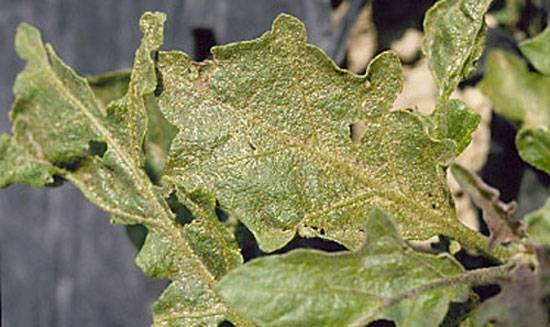Watermelon
Thrips

Thrips
Thrips palmi

Thrips
Thrips palmi

Thrips
Thrips palmi

Thrips
Thrips palmi

Thrips
Thrips palmi
Melon thrips (Thrips palmi) have emerged as a significant pest in recent years, spreading from their native Southeast Asia to various parts of the world, including the Pacific islands, North Africa, Australia, Central and South America, and the Caribbean. Although they thrive in tropical regions, their presence in greenhouses suggests the potential for broader infestation. Their life cycle is heavily influenced by temperature, completing a generation in as little as 20 days at 30°C, but taking up to 80 days at 15°C. Warm weather particularly favors their multiplication.
Life Cycle of Melon Thrips
- Eggs: Females lay eggs in leaf tissue, with one end of the egg slightly protruding. The eggs, bean-shaped and pale white, hatch in about 7.5 days at 26°C but take 16 days at 15°C.
- Larvae: Resembling adults but without wings, larvae pass through two stages, feeding in groups on the midrib and veins of older leaves. Development takes 14 days at 15°C and 4 days at 32°C. Afterward, larvae descend to the soil to pupate.
- Pupa: The prepupal and pupal stages are non-feeding and mostly inactive, taking around 12 days to complete at 15°C. Wing pads start to develop in these stages.
- Adults: Adults are pale yellow or whitish, with dark setae and fringed wings. They are about 0.8 to 1.0 mm long, with females larger than males. Adults prefer feeding on young growth and can live from 10 to 30 days, depending on conditions. Females can lay up to 200 eggs, although the average is around 50.
Damage Caused by Melon Thrips
Melon thrips feed on a wide range of plants, but they are particularly harmful to crops in the Cucurbitaceae (e.g., melons, cucumbers) and Solanaceae (e.g., tomatoes, peppers) families. Their feeding causes severe damage, leading to yellowing, browning, and crinkling of leaves, with heavily infested fields acquiring a bronze tint. The terminal growth of plants can become stunted and deformed, significantly affecting crop yields.
As the global distribution of melon thrips continues to expand, managing this pest is becoming increasingly important for protecting both field crops and greenhouse production systems.
Blog
Explore Our Blog

